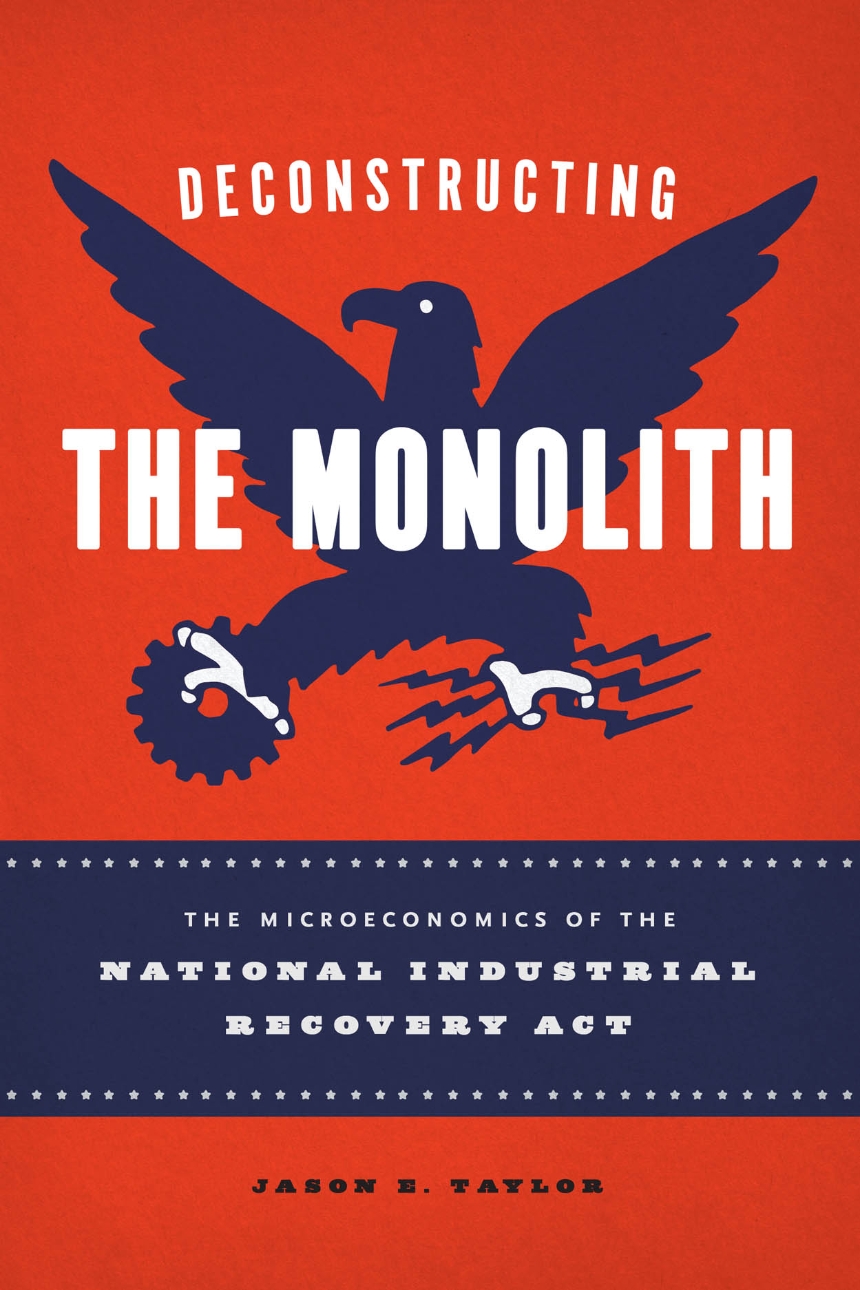Deconstructing the Monolith
The Microeconomics of the National Industrial Recovery Act
9780226603308
9780226603445
Deconstructing the Monolith
The Microeconomics of the National Industrial Recovery Act
The National Industrial Recovery Act (NIRA) was enacted by Congress in June of 1933 to assist the nation’s recovery during the Great Depression. Its passage ushered in a unique experiment in US economic history: under the NIRA, the federal government explicitly supported, and in some cases enforced, alliances within industries. Antitrust laws were suspended, and companies were required to agree upon industry-level “codes of fair competition” that regulated wages and hours and could implement anti-competitive provisions such as those fixing prices, establishing production quotas, and imposing restrictions on new productive capacity.
The NIRA is generally viewed as a monolithic program, its dramatic and sweeping effects best measurable through a macroeconomic lens. In this pioneering book, however, Jason E. Taylor examines the act instead using microeconomic tools, probing the uneven implementation of the act’s codes and the radical heterogeneity of its impact across industries and time. Deconstructing the Monolith employs a mixture of archival and empirical research to enrich our understanding of how the program affected the behavior and well-being of workers and firms during the two years NIRA existed as well as in the period immediately following its demise.
The NIRA is generally viewed as a monolithic program, its dramatic and sweeping effects best measurable through a macroeconomic lens. In this pioneering book, however, Jason E. Taylor examines the act instead using microeconomic tools, probing the uneven implementation of the act’s codes and the radical heterogeneity of its impact across industries and time. Deconstructing the Monolith employs a mixture of archival and empirical research to enrich our understanding of how the program affected the behavior and well-being of workers and firms during the two years NIRA existed as well as in the period immediately following its demise.
224 pages | 17 halftones, 13 line drawings, 17 tables | 6 x 9 | © 2019
Markets and Governments in Economic History
Economics and Business: Economics--Government Finance, Economics--History
Reviews
Table of Contents
Preface
1 Introduction
2 The Underpinnings, Precursors, and Development of the NIRA
3 The NIRA Code Negotiation Process
4 The President’s Reemployment Agreement of August 1933
5 Codes of Fair Competition: Industrial Planning and Collusion under the NIRA
6 The NIRA Compliance Mechanism in Theory and Practice
7 The Economics of Compliance and Enforcement and the NRA Compliance Crisis
8 The Schechter Decision and the Lingering Effects of the NIRA
9 Conclusion
Acknowledgments
Notes
References
Index
1 Introduction
2 The Underpinnings, Precursors, and Development of the NIRA
3 The NIRA Code Negotiation Process
4 The President’s Reemployment Agreement of August 1933
5 Codes of Fair Competition: Industrial Planning and Collusion under the NIRA
6 The NIRA Compliance Mechanism in Theory and Practice
7 The Economics of Compliance and Enforcement and the NRA Compliance Crisis
8 The Schechter Decision and the Lingering Effects of the NIRA
9 Conclusion
Acknowledgments
Notes
References
Index
